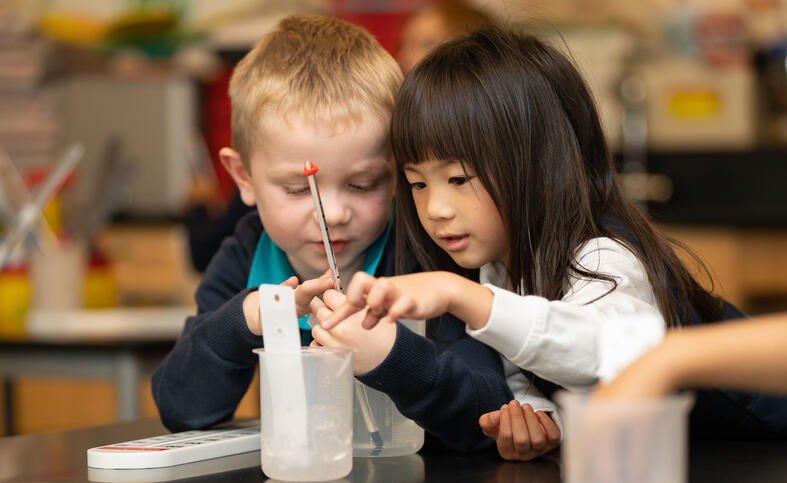We use cookies to improve your online experiences. To learn more and choose your cookies options, please refer to our cookie policy.

The 3- and 4-year-old students in Phil Wrigley's nursery classroom at the British International School of Chicago-South Loop were on the hunt to find items starting with the S sound that were scattered throughout the room. What unfolded was a prime example of the power of play-based learning.
"The idea was the children would go away, find the sounds and put them into a bucket with that letter written on it so they would start developing the connection between the sound making that letter," Wrigley says.
The following day, the items were left out for the kids to explore on their own. The students ended up playing the game all over again, and by the end of the week, every child in the class had learned the S sound.
"They were getting so much joy out of just the game with these toys that it was incredible to watch them learn because they had no idea they were learning about it," he says.
That's the beauty of play-based learning. It's something that the educators at the British International School of Chicago, South Loop believe in — and it boasts big benefits for children.
"It all stems from the idea that children learn best when they are given appropriate amounts of responsibility and autonomy in their learning so they have room to make errors and make their own decisions," Wrigley says of play-based learning.
Here's more about the school's play-based approach in the Early Years at British International School of Chicago, South Loop and why play-based learning works so well for children.
In the Early Years, your children aren't just coloring, building with Lego or splashing at a water table. They are learning everything from math to language to motor skills to people skills. In fact, children can learn anything through play.
At British International School of Chicago, South Loop, kids come to class, play and have fun — and before they know it, they've learned 100 new skills. While playing, they are free to explore and there aren't any wrong answers or mistakes that can be made.
Plus, the kids are free to learn at their own pace.
Play complements the traditional learning at the British International School of Chicago, South Loop. That mixed instruction works best, Wrigley says, and it has led to student success. If, for example, they are discussing math, they may use Lego to make patterns such as red, green, red, green. When discussing capacity and learning the meaning of "full" and "empty," kids will get the chance to play with a water or sand table where they can fill and empty containers. When learning about growing and changing, the kids will play at a table filled with earth elements, seeds, soil and watering cans.
"Kids can come in and get messy and start learning that vocabulary," and how things grow, he says.
The class environment is welcoming and features several areas for play including a water tray, sand tray, construction zone, sensory play area, role play area, Play-Doh, slime and a place for kids to made mud pies, Wrigley says.
"You can really tailor the learning through play to fit the age and the ability of pretty much any child so I feel play shouldn't stop in early years. As the children get older, I think it's important for them to always have the chance to play," he says.
The beauty of play-based learning is that it’s never limited to the classroom environment. Young children are eager to play — and learn — no matter where they are. Parents can leverage this natural interest to support their child’s learning — with real-world benefits.
If kids are learning about shapes in the classroom, Wrigley suggests parents go on a shape hunt with their kids at home. If they are learning about money in the classroom, he encourages parents take their kids shopping. Giving some real-life experiences helps to further enhance classroom learning.
For parents who want to continue the play-based learning at home, Wrigley suggests keeping the following items on hand: paint, Play-Doh, pencil, paper and puppets. Follow your child's interest when it comes to incorporating play to enhance learning. Parents should get involved too. After all, you're never too old to play — and learn something new.